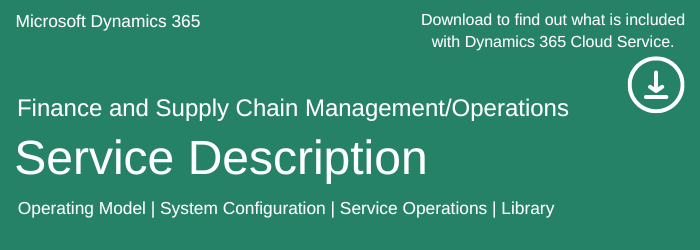One of the questions that organizations looking to transition or upgrade to Microsoft Dynamics AX or NAV ask is how many organizations use the ERPs. Data released from the recent Convergence 2015 conference shows that Microsoft NAV is the most popular Dynamics product. In fact, Dynamics NAV has more than double the total customers of the next most popular ERP.
Here is a breakdown of the number of worldwide customers that use Microsoft ERP solutions:
- Microsoft Dynamics® NAV 10,000 companies
- Microsoft Dynamics® GP 47,000 companies
- Microsoft Dynamics® CRM 40,000+ companies 4.4 million users
- Microsoft Dynamics® AX 20,000 companies
- Microsoft Dynamics® SL 13,500 companies
The figures for Microsoft Dynamics Retail Management System are as follows:
- Microsoft Dynamics C5: 85,000
- Microsoft Dynamics Retail: 46,500
- Microsoft XAL,C4/Apertum: 30,000
(Image: chart 1: http://www.erpsoftwareblog.com/2015/03/how-many-companies-use-microsoft-dynamics-erp)
The 2015 numbers show a significant increase in the number of customers using Microsoft Dynamics NAV and AX. For comparison purposes, let's check the customer statistics for 2014:
- Microsoft Dynamics® NAV 102,000 companies
- Microsoft Dynamics® GP 47,000 companies
- Microsoft Dynamics® CRM 40,000 companies 4 million users
- Microsoft Dynamics® AX 19,000 companies
- Microsoft Dynamics® SL 13,500 companies
(Image: Chart 2: http://www.erpsoftwareblog.com/2015/03/how-many-companies-use-microsoft-dynamics-erp)
Dissecting the figures, you will notice that both Microsoft AX and NAV experienced growth in the number of users, adding 1000 new customers over the past year. The other Dynamics systems remained somewhat stagnant in respect to customer growth.
In the early 2000s, Microsoft Dynamics was the most popular accounting and ERP system around the word. However, most potential customers had to be educated on what the product as. Today, we are seeing most organization have heard of Dynamics AX and NAV and specifically ask for the solutions.
Dynamics AX and NAV are multi-dimensional products with many strengths. The typical mid-market solution follows either of these two approaches:
- A system that can be configured to the unique requirements of a business
- High levels of functionality with minimal customization ability
Dynamics AX and NAV stand out from the pack in that they have legitimate strategies for both two approaches. The systems have advanced functionalities that can be installed and configured to the needs of any organization faster. The configuration can be done using Microsoft’s RapidStart methodology that reduces the initial cost of installation.
Organizations looking for ERP solutions that can be customized and configured to their unique requirements find Dynamics AX and NAV strong contenders. The flexibility of the two solutions makes them suitable for configuration to the unique needs of different departments. The flexibility also makes them popular solutions in different industries.
One of the biggest advantages of Dynamics AX and NAV, especially in markets dominated by legacy or custom-built solutions, is the level of investment from Microsoft. ERP technology is always changing and mid-sized companies rarely keep up with the changes. By failing to implement new technologies, organizations can miss opportunities to improve productivity and efficiency in their processes and reduce revenue leakage.
Functionality vs. Usability
The functionality of both Microsoft Dynamics AX and NAV is great. However, what about usability?
The principles behind Microsoft Dynamics have always been that the solutions should be familiar and easy to use. Over time, both AX and NAV continue to be more like Microsoft Office, enabling even more customization for users. The solutions allow users to export information to familiar Microsoft Office applications such as Word and Excel, and other universal applications like PDF.
Today’s generation has grown up with computers and technology. The users, especially those coming into the workforce in the last 10 years, will be very comfortable with the familiar “look and feel” of Dynamics AX and NAV.
Microsoft Dynamics Scalability
One of the problems that most organizations using legacy and other custom accounting systems is that they outgrow the solutions. Organizations that jump into entry-level systems may quickly outgrow them and have to upgrade twice to get up to mid-market products.
With Dynamics AX and NAV, organizations can put up a system in place for just a few users and scale up to hundreds of concurrent users when the organization grows. The scalability of the solutions helps to avoid the need for multiple upgrades and still enjoy the advanced functionality available right from the start.
 How Many Companies Use Microsoft Dynamics AX and NAV?">
How Many Companies Use Microsoft Dynamics AX and NAV?">

